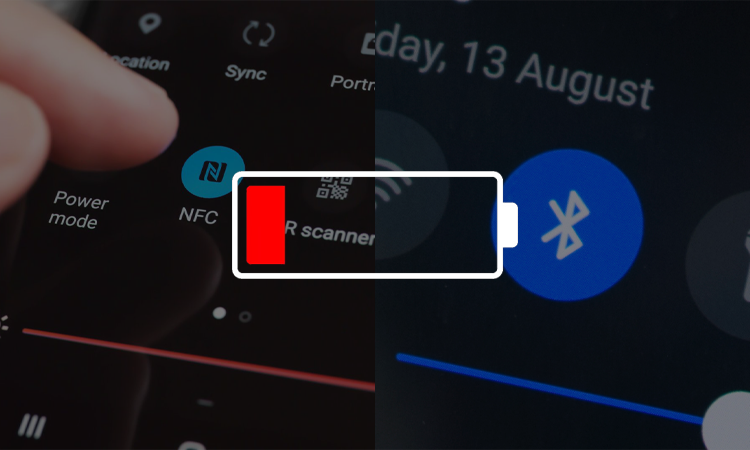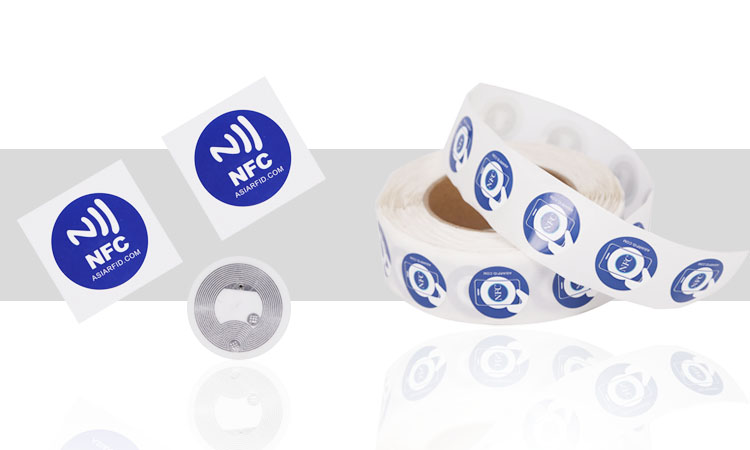Near Field Communication (NFC) is a wireless technology that allows devices to communicate with each other. While it has become a popular feature in smartphones and other devices, there is a common belief that NFC drains battery. But is this really true? Let’s delve into the research and facts to find out.
Can NFC Run Without Power?
NFC technology enables two devices to communicate wirelessly using radio waves. While NFC requires a power source to function, it does not necessarily need to draw power continuously.
In fact, NFC technology is designed to consume very little power. This makes it ideal for portable devices such as smartphones and smartwatches. NFC is typically in standby mode when not in use, consuming virtually no power.
NFC requires only a small amount of power to communicate with other devices when activated. This power consumption is minimal compared to other wireless technologies such as Wi-Fi and Bluetooth. Therefore, this advantage also makes NFC an energy-efficient choice for short-range wireless communication.
However, some devices may use more power for NFC communication than others. This depends on the hardware and software configuration of the device. In addition, some NFC applications, such as contactless payments. They may require more power than other applications due to security and encryption requirements.
While NFC does require power to operate, it is designed to be an energy-efficient technology that minimally impacts battery life in most devices.
Related Articles: What is NFC Mobile Payment & Why Choose It?
Does NFC Drain Battery?
There is a common belief that NFC technology drains the battery of smartphones and other devices. While NFC does consume power when active, it is generally considered a very low-power technology. In fact, most experts agree that NFC consumes less energy than other wireless technologies like Wi-Fi or Bluetooth.
NFC typically consumes less than 100 milliwatts of power when activated. This is a fraction of the battery capacity. NFC consumes negligible power compared to other battery-hungry features such as video streaming or gaming.
Furthermore, NFC is designed to operate in standby mode, which consumes virtually no battery. The NFC chip is typically turned off or in a low-power mode when not in use. This means that NFC does not drain the battery when it is not actively used.
That being said, if NFC is used frequently, it may slightly impact battery life. However, this impact is generally considered minor and insignificant enough to cause a noticeable decrease in battery life.
There was a heated discussion on Quora.
Bluetooth VS NFC Battery Drain
Regarding battery drain, NFC and Bluetooth are two wireless technologies that are often compared. While both technologies use wireless communication to exchange data, they have some fundamental differences that can affect battery life.

NFC is designed to consume very little power and is typically only activated when two NFC devices are in close proximity. On the other hand, Bluetooth is designed to operate over longer distances and can consume more power as a result.
On the other hand, Bluetooth is a more power-hungry technology. It can consume a significant amount of battery power when Bluetooth is actively connected to a device. For example, streaming music via Bluetooth can quickly drain a device’s battery, especially if the connection is weak or unstable.
However, modern devices are designed to optimize power consumption for both Bluetooth and NFC. Bluetooth 5.0, for example, is more power-efficient than previous versions and can consume less energy when used in low-power mode. Similarly, NFC chips are designed to minimize power consumption by operating in standby mode when not in use.
The impact on battery life will likely be small for both NFC and Bluetooth, as modern devices are designed to optimize power consumption and prevent unnecessary battery drain. Users can further minimize battery drain by turning off Bluetooth and NFC when not in use or using low-power modes when available.
Related Articles: Difference Between NFC and Bluetooth
Differences in Power Consumption Between Devices Using NFC
The power consumption of NFC varies between different devices and manufacturers. Factors like the NFC chip used, software optimization, and overall device power efficiency can all affect how much power NFC consumes.
For example:
- Samsung has developed a range of low-power NFC chips. They are specifically designed to consume minimal power. These chips are used in many of Samsung’s devices, including the Galaxy S21 and Note 20 series. Samsung devices also include software optimizations that automatically turn off NFC. Further, reduce power consumption when you’re not using it.
- Apple devices typically have a slightly higher power consumption when using NFC. However, Apple has implemented several software optimizations that help to minimize power consumption. Such as only allowing certain NFC functions to be used when the device is unlocked.
- Huawei devices also use NFC technology, with their most recent devices using an advanced NFC chip that is designed to consume very little power. Huawei has also implemented software optimizations. This help to reduce power consumption when NFC is not in use.
While it is true that NFC drains battery to some extent, modern devices and software optimizations have greatly minimized this impact. Manufacturers like Samsung, Apple, and Huawei have developed low-power NFC chips and software optimizations to reduce power consumption. Users can also take steps to minimize the impact of NFC on battery life. Such as turning it off when not in use. So, NFC drains battery, but it doesn’t have to be a significant drain on the device’s battery life.
More Question About NFC
-
What is NFC, and how does it work?
NFC stands for near-field communication, a wireless technology that enables communication between devices when brought close together. It uses electromagnetic field induction to enable communication between devices.
-
Does NFC drain the battery on my smartphone?
Yes, NFC does consume battery on your smartphone.
-
How much battery does NFC use?
The amount of battery NFC uses depends on how frequently it is used and for what purpose. Generally, NFC uses very little battery compared to other features such as Wi-Fi, Bluetooth, or GPS.
-
Will NFC drain my battery when turned on but not in use?
Yes, NFC will consume some battery when it’s turned on, even if it’s not in use.
-
Does turning off NFC save battery life?
Yes, turning off NFC can save battery life on your smartphone.
-
Does NFC drain the battery more on Android or iOS?
The amount of battery NFC drained is similar on Android and iOS devices.
-
How can I optimize my phone’s NFC settings to save battery life?
You can optimize your phone’s NFC settings to save battery life by turning off NFC when unnecessary, disabling background NFC processes, and using NFC only when necessary.
-
How much battery does NFC use compared to other features like Bluetooth or GPS?
NFC uses significantly less battery compared to other features like Bluetooth or GPS.
-
Can I keep NFC on all the time and damage my phone battery?
No, keeping NFC on always will not damage your phone battery, but it will consume more.
-
Does NFC use more battery when multiple apps are using it simultaneously?
Yes, using NFC for multiple apps simultaneously will consume more battery than using it for a single app.
-
Can NFC drain the battery even if I’m not using it frequently?
Yes, NFC can drain the battery even if you’re not using it frequently, especially if it’s constantly turned on.
-
Does NFC drain the battery more during data transfer or when the connection is idle?
NFC usage during data transfer consumes more battery than when the connection is idle.
-
Does turning off NFC affect phone performance or functionality?
No, turning off NFC does not affect phone performance or functionality.
-
Where can NFC be Used?
NFC can be used for various applications, including contactless payment systems, data transfer, access control systems, and public transportation. It can also be used in marketing and advertising, with NFC-enabled posters and billboards that provide consumers with information or offers.








